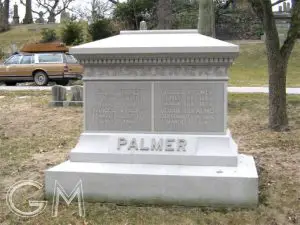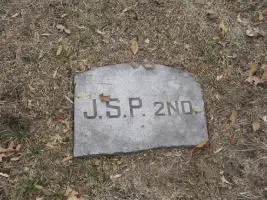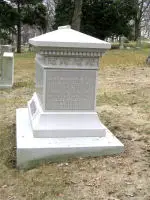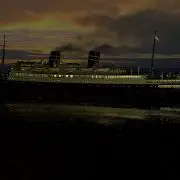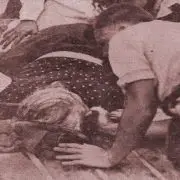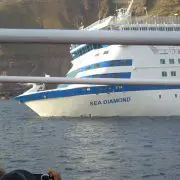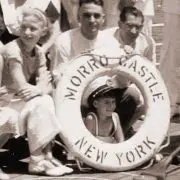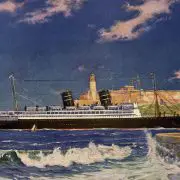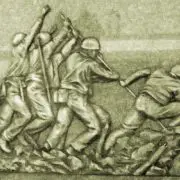Morro Castle, Mohawk and the end of the Ward Line : Part 4
The Yucatan Expedition
Jim Kalafus and Mike Poirier
The best account of the Mohawk disaster, and one of the best shipwreck accounts in general that we have found, was written by 23 year old Karl Osterhout, a student from Williams College who, at the request of the school, set down a painstakingly detailed reminiscence of the disaster which claimed three of his classmates and their professor.
Outerhout, of Williamstown, Massachussetts, and formerly of Yonkers, N.Y. and New York City, was part of an expedition of Williams College seniors who intended to spend three weeks in Cuba and The Yucatan studying geology and archaeology. The first leg of their trip was the voyage from New York to Cuba, after which they would fly to Mexico. Joining Osterhout were William Dwight Symmes of Manhattan, Julius Palmer of Providence, Rhode Island, Roy Huth Myers from Pittsburg, Pennsylvania, Lawrence D. Rockwell of Smithtown, Long Island, New York, and Lloyd Houghton Crowfoot from Ashburnham, Massachusetts. Their leader, Professor Herdman Fitzgerald Cleland, 65, had published at least six books (the best known of which were Our Prehistoric Ancestors, and Why Be an Evolutionist?) and was a specialist on with the link between anthropology and geology as established through the archaeological record. According to 1935 newspaper accounts, the expedtion was funded by an anonymous donor.
What should have been the adventure of a lifetime instead ended tragically only six hours out from New York City.
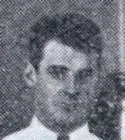
Karl Osterhaut
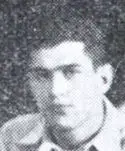
Lawrence Rockwell
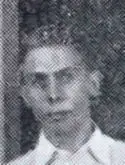
Roy Huth Myers
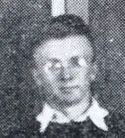
Lloyd Crowfoot
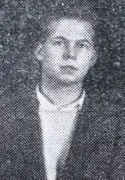
William Symmes
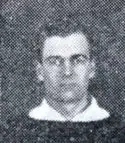
Julius Palmer
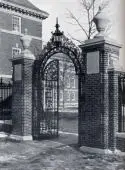
Memorial Gate
We begin Osterhout’s account on sailing day, in New York City. He had traveled down from Albany in the company of his friends Julius Palmer and Lloyd Crowfoot, and joined the rest of the expedition members at the Williams Club in Manhattan. The trip was to overlap exam week, and so the students took the first of a series of exams in the club dining room – the rest would be spaced throughout the journey.
When the examination period closed at twelve o’clock, I went to my room and finished packing. Then I went to Palmer’s room and visited with him while he shaved and packed. The evening before he had been out with Alice Greenwich, so he called her up to bid her goodbye, and she invited both of us to luncheon. I asked Dr. Cleland if it were all right for us to leave. He was lunching in the club dining room with Mr. Howard Scholle and said we didn’t have to meet until the boat sailed.
During the examination, Palmer had broken the crystal of his watch, so before leaving the club definitely, we went out to have it fixed. I bought a carton of cigarettes and two rolls of film for my camera. At about 1:30 we finally left the Williams Club and drove to Wall Street, where we met the Greenwiches and had luncheon. They were very nice people and insisted on buying a carton of cigarettes for Palmer. As we had about an hour before sailing time, we went up to Mr. Greenwich’s office on the twenty-fifth floor of a building in lower New York, and there we had our first look at the Mohawk. It looked very small from where we were. Getting more excited about our trip, we left and went on board. As Palmer and I planned to room together, we went directly to our stateroom, Number 112, and checked our baggage. From there we went directly to the forward part of A Deck and waved to Alice Greenwich and her mother in the building across the way. I ws surprised to see so much snow and ice in the corners of the deck.
(Professor Cleland) was much upset that Crowfoot hadn’t arrived yet, he said that would delay us and upset all our plans. However, just as the crew were about to take in the gangplank, Crowfoot arrived in a taxi. He told us he had instructed the taxi driver to drive him to Pier 13, and that the taxi had taken him to Pier 13, North River. Discovering, on their arrival, that it should have been Pier 13, East River, they drove at breakneck speed across the city, crashing all the red lights in order to reach the boat before it sailed.
As it was a very cold, blustery day, we didn’t stay long on deck after the two tugs started to ease the ship from the pier. We went inside to inspect the ship and only returned to the deck again to take a few pictures as we went past the lower point of Manhattan and the Statue of liberty.
.the lounge was very cool because the starboard door to the deck did not shut tightly.
.we headed for the dining room, only to be told dinner was not ready. We wandered back to the stern, and about midship we felt the boat start to rock as if it had stopped. It made walking difficult, but the rocking motion only lasted a short time.
Dr. Cleland told us how the ship managed its library and how he on all his trips had never had to pay the dollar deposit on a book. He also remarked that never before had he known dinner to be late.
.we decided to wait no longer for our meal, so we walked right in and were placed at our table, in the corner towards the bow on the port side.
Once during our meal the boat must have stopped, or we again noticed the rocking movement, which lasted about five minutes.
After our meal, we went to the club room , or bar, in the stern of the ship.Rockwell suggested cards, so four of us, Rockwell, Symmes, Myers and I bought two packs of cards and started to play: Roy (Myers) was my partner..Crowfoot and Palmer were writing letters nearby, and the ship’s orchestra was playing.
Dr. Smith told two or three jokes, but the interest turned from him when someone mentioned that we were passing the spot where the Morro Castle lay. Many of the more curious ran to the windows and peered out into the night in the direction of that ship.
Shortly after this, the Mohawk started to rock back and forth, as she had done twice previously, then there were there short blasts from a boat’s whistle.then came the crash. It didn’t sound like a big crash, but there was a sound like splintering wood. At the inapt everyone stood up simultaneously;. One woman screamed. Someone said “Here it is.” Luckett tried to get the band to play, but the men refused..
I immediately ran out on deck through the door on the portside of the main stairway known as the sun parlor. Looking forward, I could see a steamer in contact, or practically in contact, with the Mohawk…I hurried inside and down to my stateroom to get my coat, hat, gloves and muffler. When I came back on deck, I ran across professor Cleland, who asked me if I could make out the name of the ship.. It had pulled away from us about an hundred yards, and I could just make out its name–Talisman.
Upon going inside, I remembered my glasses, so returned to the bar, found them on the table, and put them in their case. I also picked up the two decks of playing cards, where they lay strewn about, and put them in their respective boxes and into my right-hand coat pocket..
Returning to the sun parlor, I met Dr. Cleland again, who told me to put my life preserver on and get a blanket in case we had to take to the boats. He already had both of these things.
When I went into my stateroom, there was Palmer seated on his bunk, writing in his diary and using the sink as a table. I threw the playing cards on the bunk, grabbed a life preserver and told palmer to do the same thing. As I was about to leave the room, Palmer said “I am writing in my diary exactly how I felt when the crash came.”
I again ran across Professor Cleland, and as I was putting on my life preserver he said to me “I wish this could have happened in warmer waters.” As I look back on that remark, I realize that Dr. Cleland knew then that we were in a serious situation.
Immediately after the crash our Williams party became separated, and we were never together again as a group. From time to time I ran into one or another of them in different parts of the boat.
I made my way to the top of the stairs, to A Deck. There was then a great crowd around the door and no chance of getting on deck. Ad the boat was tilted to port and down at the head, several people shouted for everyone to get to the starboard side to bring the boat on an even keel.
.I returned the way I had come, and met the five members of the Telfer family outside of one of their staterooms. This family consisted of Mr. and Mrs. Telfer, their two sons aged four months and five years, and Mr. Telfer’s mother. Mr. Telfer was having a difficult time getting his life preserver tied on, so I tied it for him. Then he asked me to help the grandmother, who had the four month old baby in her arms. The ship was at such an angle that it was very difficult to help her. The only thing I could do was get behind her and push her along the wall, as both of us had to lean against the stateroom walls to keep our balance. When we came to the end of the wall and into the sun parlor, we almost fell down, but we managed to reach the stairs and I forced her up by pushing with all my strength. The last few steps were the most difficult, as they were on such a slant. Several men were in front of the doorway onto the deck, but they stepped aside and let her through. My work with her ended when she went through the door. At this point I noticed two people, a man and a woman, seated on side seats in the sun parlor on A Deck. They were visiting, and not the least bit disturbed at the general commotion. They acted just as if it were a regular occurrence. The next day I learned that they were Mr. and Mrs. Peabody.
Shortly after, while standing on B Deck, I saw boats Number 3 and Number 5 come over the side. Both boats seemed quite full, and as the occupants in Number 3 shouted the boat was full, the men running it down from above did not stop it at B Deck. As Number 5 came down to deck level, several of us persuaded the occupants to take the elder Mrs. Telfer and the four months old baby, so with the aid of a man in the boat the young Telfer was handed over into the boat. He was all bound up in blankets and several of us feared that he might fall between the two boats, but the man in the lifeboat had a good grip and there was no accident. Both of these boats, number 3 and number 5 had a great deal of trouble getting away from the Mohawk. One was attached by the stern and they couldn’t seem to free it. One of the sailors in this boat called up to deck for an axe, but ti was lost over the side. This boat finally came free and pulled away.
At one point in my travels around the decks I remember seeing Professor Cleland having a polite argument with a stout man on A Deck. They were just going out the starboard deck and each was trying to persuade the other to go first. Gentlemen to the last.
.letting go of the railing, I fell flat on my back on the icy deck and was only able to pick myself up fifteen feet away from where I started. Everyone near by turned to see who was causing all the commotion. From here I started down the deck and came up behind Mrs. Telfer and her five year old son. She was leading the way and he was trying to keep up with her, and he must have been frightened for he began to cry. I tried to cheer him up by putting my hand on his shoulder and speaking to him. At this moment I saw a boat going over the side, but it was too far over that we couldn’t enter it from A Deck, so I picked up the child in my arms and, calling to Mrs. Telfer, headed down the deck, through a door, and down a very narrow flight of stairs to B Deck. Several men were coming up the stairs, but I called to them there was a child and a lady, so they got to one side. One thing that bothered me as I went through the door was to see a man coming out with a large brown suitcase in his hand. I carried the boy down the stairs and out on deck and passed him into Boat 7 from B Deck. The people already in the boat wouldn’t let Mrs. Telfer in, as they said there wasn’t room for any more. She became upset when she saw the boat being lowered into the water with her son in it, and said “I hope he will be all right.” I told her that he would be and putting my hand on her shoulder started to walk with her toward the stern. I was on her left side. As Mr. Telfer came up on her right side almost immediately, I left them. As I was going away, she thanked me. Both Mr. and Mrs. Telfer were lost.
A few minutes later, passing through the sun parlor, I was conscious of the sound of breaking glass. The noise came from the forward part of the ship, and must have been caused by the pressure of water against the forward lounge as the ship was going under. While I was listening, the ship came to an even keel and a feeling that everything would be alright from now on passed though my mind. But at that moment the lights went out, leaving us in total darkness: however, they came on again almost immediately. At that time there were quite a few people around the doorway into A Deck, and Mr. and Mrs. Peabody were seated in the same position as when I spoke of them before.
The next thing I remember was walking towards the bow on the starboard side and looking off in the distance at a ship with a searchlight. This ship was some distance from us at the time and headed our way with its searchlight directed on the Mohawk. Of a sudden, looking down, I saw water washing up to my feet,. It was around the forward lounge door, so that I could not have gotten to that door if I wished.
.just then two people joined me, a man and a woman who had come around from the stern. It was so dark that I was unable to recognize their faces. Further down the deck I saw several men trying to launch a boat, so, going back to the sun parlor door, I called for the rest of our crowd. Myers and Rockwell came, and the three of us headed down the deck towards that boat. As we came up, the men pushed it over the side and started to let it down. I hollered that we would have to go to the next deck to get it, so we started down the small stairs opposite the ones which I had carried the Telfer boy some time previous. I went down first, Rockwell was right behind me, and Myers was third. The boat was passing by the railing as we came out on b Deck, but it caught against the side of the tilting ship. Three men were in the boat by then, trying to rock it down. One of them was trying to clear the lifeboat from the main vessel by using an oar as a lever between, but as he couldn’t get any leverage, I climbed over the rail and , leaning over the side, tried to guide the oar handle into a porthole to give it leverage. The boat was lowered slowly by this method, and all the time we were working on it people from above were throwing suitcases and luggage into it. Most of the luggage broke open when it
i landed and scattered things over the bottom of the boat. When the lifeboat finally hit the water, we all jumped. I landed in front of the boat and immediately, with the aid of two sailors, tried to release the frozen chocks. Finally, after what seemed like a long interval of time, our end came loose and swung away from the sinking Mohawk. However, the other end would not seem to come free and there was a great deal of shouting going on. At this time the ship was well over on its side. Our lifeboat would drift away as far as the davit ropes would let it, then a wave would catch us and drive us up against the bottom with terrific force. This happened three or four times before the other rope was finally loosened and by the aid of wind and oars we got away, off the port side and stern of the sinking ship.
When we were about fifty yards away, we could see the lights of another ship playing on the Mohawk, and as the rescue ship was on the opposite side of the Mohawk, its searchlight vividly outlined for us the situation we had just left. The Mohawk was well over on its starboard side and well down in the bow. Its rudder was in sight, as was a portion of the propeller, and then I saw three people jump from the stern and land with a splash in the zero water. Beyond this scene we could see another lifeboat full of people pulling off the starboard. We were only about a hundred yards away when she finally sank, the port side of her stern going down last.
Osterhout, Myers and Rockwell found themselves in less than congenial company as their lifeboat slowly made its way to the Algonquin.
Several waves were so large that they blocked out our view of the ship entirely. The spray from them froze immediately and was a sickening sight. One or two of the men in our boat were lying on the bottom and shouting orders to us, which made me mad, for they were no more eager to reach that ship than the rest of us pulling on the oars.
…it was then that I began to get seasick and realized also that my left ear was freezing.
.Roy’s partner had given up rowing because of the cold, and several men were sick around me, which did not help my stomach at all. Two other men near me were complaining of the cold and refusing to row which made Roy mad and he was giving them hell.
…as we got nearer to her, I gave up all interest in rowing and spent my time trying to keep my cold feet out of the water in the bottom of the boat, my left ear from freezing, and my dinner where it belonged. As we came up to the port side of the Algonquin, they threw us a line of heavy cable from their cargo opening. Being eager to get in to a more solid structure, I grabbed the rope and hung on. As our boat swung past the door, Iwas almost dragged overboard between the two boats, but two men grabbed on and we were pulled up to and into the ship.
On board the Algonquin, the young men tried to make themselves as comfortable as possible as the horrible realization that they were the only survivors from their party sank in.
About this time, Larry Rockwell and Roy Myers went by our stateroom door, headed towards the bow, and feeling in need of action I put on my shoes and followed them. They were tending to those who needed aid and were assisting everyone in general. As other lifeboats were picked up from time to time, we found plenty to keep us busy. After some time, with people settled in as much as they could be, we decided to go to Mrs. Maurice’s stateroom as she seemed to be the most congenial as well as the most cheerful person on board.both of the women were frightfully cold, and the doctor thought that Mrs. Maurice’s mother might be dead, but she came to slowly in a warm cabin.
I made a round of the staterooms to see if I might recognize anyone. As all the stateroom doors were left open, it was easy to see everyone and everything that went on. Near the stern on the starboard side I saw two young women, Mrs. Lord and Mrs. McKee, taking care of Mrs. Telfer and the four months old baby. Lone of the women was feeding the baby milk from a bottle and using the finger from a rubber glove for a nipple. In some staterooms people were groaning, while in others they seemed very calm and were trying to get some rest. But few were the people I recognized on that tour of inspection.
.Mrs. Maurice, in her quiet way, told us of her travels and did her best to keep our minds off the last few hours.
Going back to the stateroom, I took my old seat–a chair at the head of the bunks. Roy was still in the same place–lying on the upper bunk.
As for the three of us, we often spoke concerning the other members of our party. Mrs. Maurice tried to keep up our spirits, and a little hope was raised when word came that the Limon had picked up one lifeboat. But our hopes never rose too high because of our mental picture of our friends’ poor chance of escape.
Larry and Roy decided to get some sleep. Larry went off by himself, so Roy and I went to a stateroom, where he got into the lower berth and I got into the upper. Roy preferred to have the light left on; and it was better than the lonely darkness. After tossing around and trying to get comfortable, I gave up the idea and went back to join the group in Mrs. Maurice’s stateroom. It wasn’t until breakfast that I saw either of my companions again, as they were both able to get to sleep.
.I did not feel hungry myself, but went into the dining room, and there a great thrill awaited me, for at one of the tables, along with Mrs. Lord and Mrs. McKee and the elder Mrs. Telfer, sat the five year old Telfer boy, of whom I had seen nothing since his lifeboat went over the side into the water. I seated myself at a table nearby, with Roy and a middle aged foreign gentleman and his wife,. Breakfast, when it came, consisted of fried eggs, ham and coffee.
Long before we took on our pilot in new York harbor, life on board became very lively. People were walking about and the hum of voices could be heard in the cabins. It was much too cold to remain long on deck, but from time to time we did venture forth for a few moments. When the pilot came aboard, many of the Ward line investigators came with him. They took our names and desired to know where we planned to go when the ship docked. Those who wished could stay at the Hotel New Yorker at the company’s expense.
The nearer we got to our pier, the more eager people were to leave the ship. Roy, “Rock”.and I stood on the deck watching the tugs trying to maneuver us up the Hudson. The river was filled with floating ice, and the sides of the lounge and trails were covered with ice.just before we docked, the three of us returned to the stateroom and saw Mrs. Maurice for the last time.
As soon as we were permitted, we hurried down the gangplank and the long wooden landing to the waiting room. I saw a great crowd of people peering anxiously towards us. Then there were the flashes of flashlight cameras.the next thing I knew, two men had hold of me. One had his arm around my neck, the other his arm around my waist; a third man was drumming me with questions, and all three were insisting I should speak over the radio. Propelled by them I went up to the microphone, where already one of the survivors was talking. I was much relieved the next instant when a newspaper man, a friend of Mrs. Symmes, was able to get me away..we headed for the Williams Club. Rockwell had departed with his family and Roy Myers was staying with the Symmes family.
Karl Osterhout was well enough to attend the funeral of Professor Cleland, at Williamstown, the week after the sinking. He had been recovered, along with Lloyd Crowfoot, Julius Palmer and William Symmes, in the cluster of 33 bodies found drifting near the wreck site on the morning after the disaster.
Palmer Grave
Of the three survivors, Osterhout died on April 3, 1992. Lawrence Rockwell died in 1975, Roy Huth Myers died in 1979.

